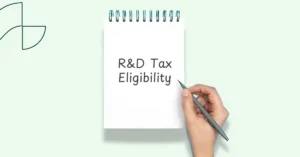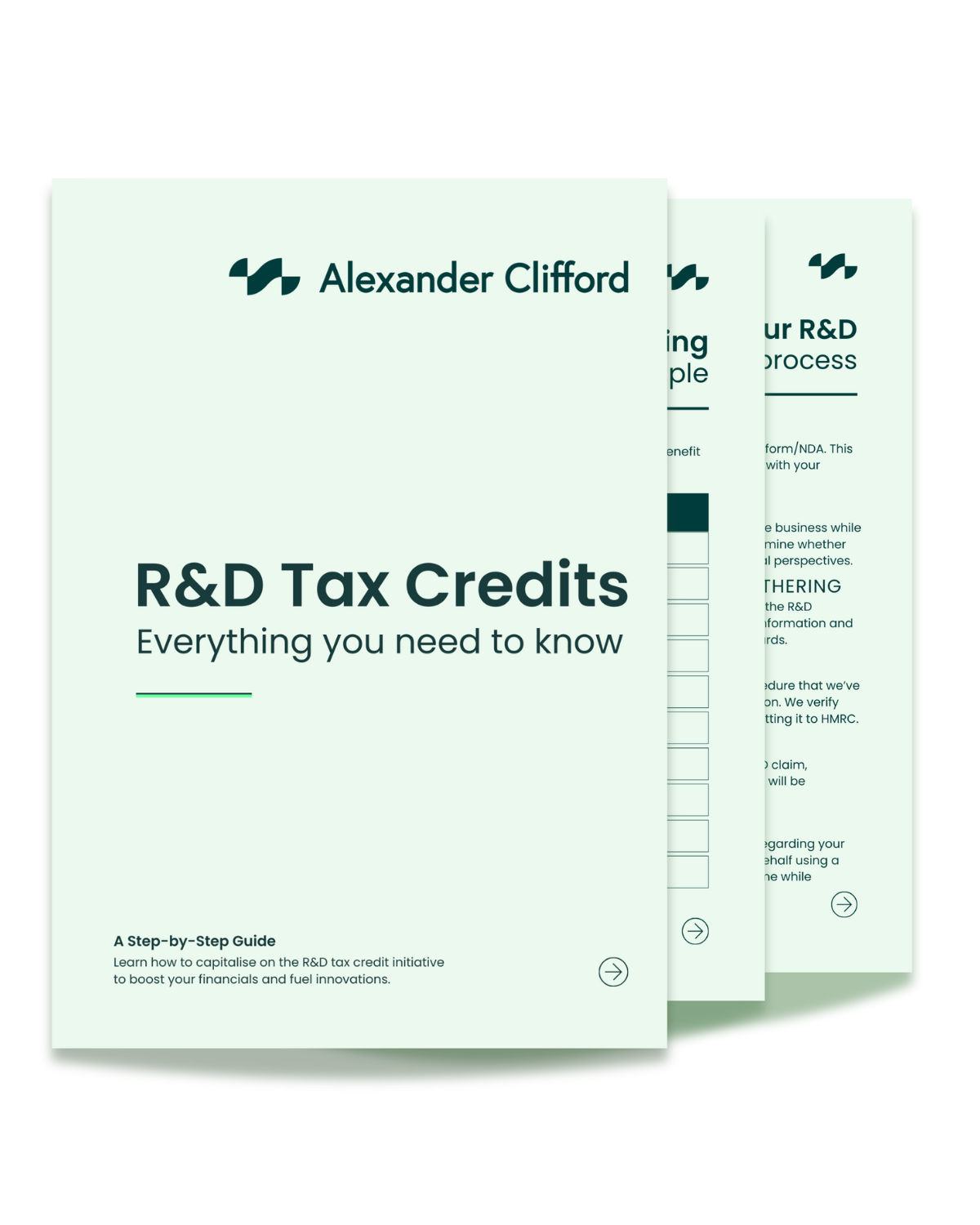6 common mistakes to avoid when making R&D tax credit claims

With HMRC being increasingly vigilant over fraud detection of claims for R&D tax credits, there are certain mistakes to avoid to prevent delay of your payment, or worse, a costly fine. The challenge for businesses lies in navigating HMRC’s guidance and documentation, to know what you need to do as part of your claim and when you need to do it. In this article, we’ll highlight some very common mistakes that companies make when claiming R&D tax relief for the first time. Equipped with this information, you can avoid these pitfalls.
1. Creating a claim for the wrong R&D scheme
It’s important to be up-to-date with the eligibility criteria for the R&D tax relief incentive to ensure this is the right R&D scheme for you. This is because there are certain circumstances where an SME would receive the financial benefit from the R&D activities through the RDEC scheme if they meet the following criteria:
When SMEs engage in subcontracting
If the SME is subcontracted by a larger company to carry out research and development (R&D) activities on behalf of the larger company, the expenses incurred for this subcontracted R&D work should be claimed under the RDEC scheme. This is to prevent the double-counting of R&D expenditure, as it is already considered part of the larger company’s overall R&D spending.
When the SME is owned by a larger company
It is some of the cases when an SME is either a “partner enterprise” or a “linked enterprise” of a larger company, they may need to use the RDEC scheme for their R&D claims.
The SME is a grant recipient
If the grant received is categorised as ‘notified state aid,’ SMEs may be required to partially or entirely claim it through the RDEC scheme. Many government-backed grants fall under this category, although exceptions may exist.
If you don’t ensure you are claiming for the correct R&D scheme, HMRC will create enquiries into your R&D tax credit claim.
2. Not keeping up with the latest changes to R&D tax relief
Another key mistake that R&D claimers make, typically when they have previously submitted a successful R&D claim, they replicate the claiming processes without first checking if anything needs to be different due to new changes rolled out to R&D. In recent years, there have been frequent changes made to the R&D rate, eligibility, partly to prevent fraud of the incentive but also to provide further support to eligible businesses in the UK.
For example, the changes that commenced in the tax year of April 2023 involved a new inclusion of cloud computing and data licenses as eligible R&D costs. If you were unaware of this you may leave these costs out of your claim resulting in a reduced reward.
3. Forgetting to notify HMRC about your upcoming claim
Before submitting your claim, you need to complete the additional information form that informs HMRC of your intention to make an R&D claim. This is applicable for those claiming for the very first time or if they haven’t submitted a claim for over 3 years. You’ll need to provide the following information inside this form to provide HMRC with a basic understanding of your R&D endeavours:
- Your company’s unique taxpayer reference (UTR) – the one that appears on your company’s tax return.
- The contact details of the individual within your company who holds the overall responsibility for the claim – a senior R&D representative, such as a director.
- The starting and ending dates of your accounting period.
- Verification of the commencement and conclusion dates of your accounting period, which should match those recorded in your company’s tax return.
- A brief summary of your planned R&D activities, presented at a high level, outlining how your projects align with HMRC’s standard definition of R&D.
HMRC will remove your R&D claim from your company tax return if you don’t notify them first. Essentially, your claim won’t be valid.
4. Not providing sufficient evidence of the R&D projects
There are two main parts of an R&D claim: financial documentation of all your R&D costs and a technical narrative. The technical narrative is written documentation that outlines the sought advance the business has made of a scientific or technical uncertainty. It needs to paint the picture of the challenge, revealing how they used trial and error and what the outcomes were. What makes the technical narrative challenging is the fact there isn’t a set template to follow provided by HMRC. It takes experience to know what HMRC needs to see and how to showcase the project in enough detail to prevent enquiries.
Why does this mistake occur?
What happens when businesses complete their own R&D claim or use an accountant rather than an R&D tax credit specialist, is their technical narrative does not meet HMRC’s standards. Due to their lack of experience with R&D claims, they may not be aware of which sections require which information.
Another reason why some businesses claiming R&D tax relief don’t provide sufficient evidence is the fact they weren’t aware their operations that might count as R&D at the time. Without knowing the project they were fully or partially working on meeting the definition of R&D, they most likely weren’t keeping timesheets, or documenting the daily trials and accomplishments that came with the projects. While HMRC is lenient about their situations for first-time claimers, they still expect some form of explanation. An R&D tax credit specialist can help fairly piece the details together and complete a claim for these situations, still meeting HMRC’s standards.
5. Inaccurate costs that flag errors
Determining eligible expenses for R&D tax relief can be a complex process when trying to detail the proportions of various eligible R&D costs. Naturally, errors arise and these errors can result in inaccurate claims. Common errors include a cost that doesn’t count for R&D or missing out on certain R&D costs which means you won’t be able to maximise R&D credits.
Some businesses may also exaggerate their R&D expenses to maximise the R&D tax benefit. Overstating expenses can lead to audits and penalties. Ensure that your expenses are reasonable, well-documented, and directly related to qualifying R&D activities.
6. Not making a claim at the right time
Missing application deadlines is a costly mistake. Be aware of the filing deadlines for R&D tax credits in your jurisdiction and make sure you submit your claim in a timely manner. Keep in mind that there is a deadline to notify HMRC as well as submitting your R&D claim.
The time frame for submitting a research and development (R&D) tax credit claim is two years from the conclusion of your accounting period. It’s necessary to file your R&D tax credit claim for any qualifying R&D expenses you’ve identified during that period before it expires. This is due to R&D tax credits being a form of Corporation Tax relief, and typically, you have up to 24 months after the end of your accounting period to make amendments to your Corporation Tax return.
Final thoughts
In conclusion, the landscape of claiming R&D tax credits is fraught with potential pitfalls that can result in costly fines or delayed payments. HMRC’s increased vigilance in fraud detection underscores the importance of avoiding these common mistakes. Navigating HMRC’s guidelines and documentation can be challenging for small and medium-sized enterprises, making it essential to understand the dos and don’ts of claiming R&D tax relief. The key takeaway is that seeking the expertise of an R&D tax credit specialist is paramount to ensure your claim accurately encompasses the full scope of R&D eligibility within your projects.
How to capitalise on R&D tax relief?
What ties all these mistakes together is attempting to claim R&D tax credits without using the expert eye of an R&D tax credit specialist such as ourselves. They benefit your R&D experience by ensuring your claim has accurately identified the full R&D eligibility scope within your project. Mistakes are costly and can significantly consume your time when HMRC initiates inquiries into your R&D tax credit claim. Certain investigations can last for as long as a year before they are resolved.
Find out how can we secure the R&D cash injection you’re eligible for while steering you through the pitfalls of R&D tax relief with confidence.







